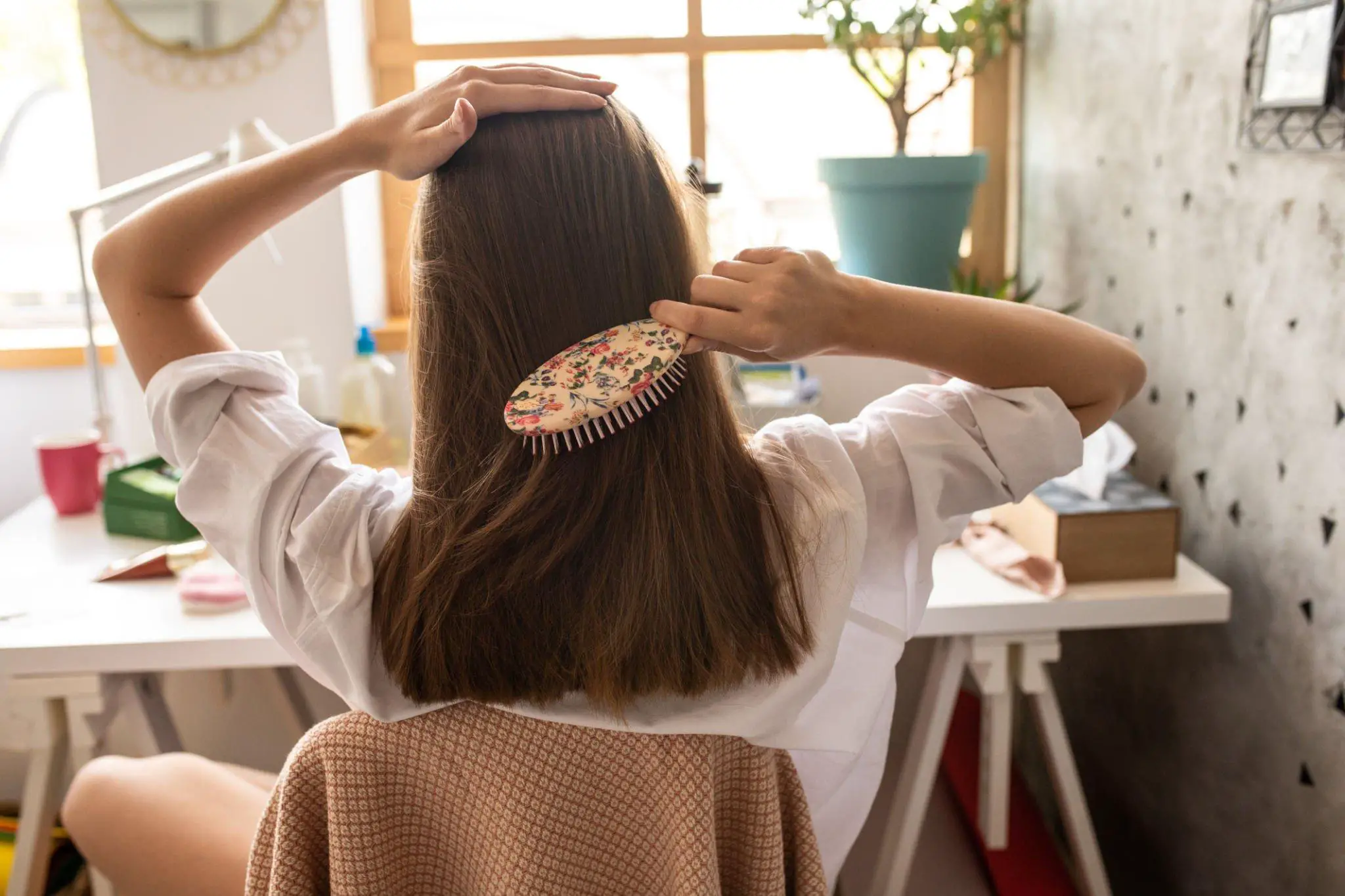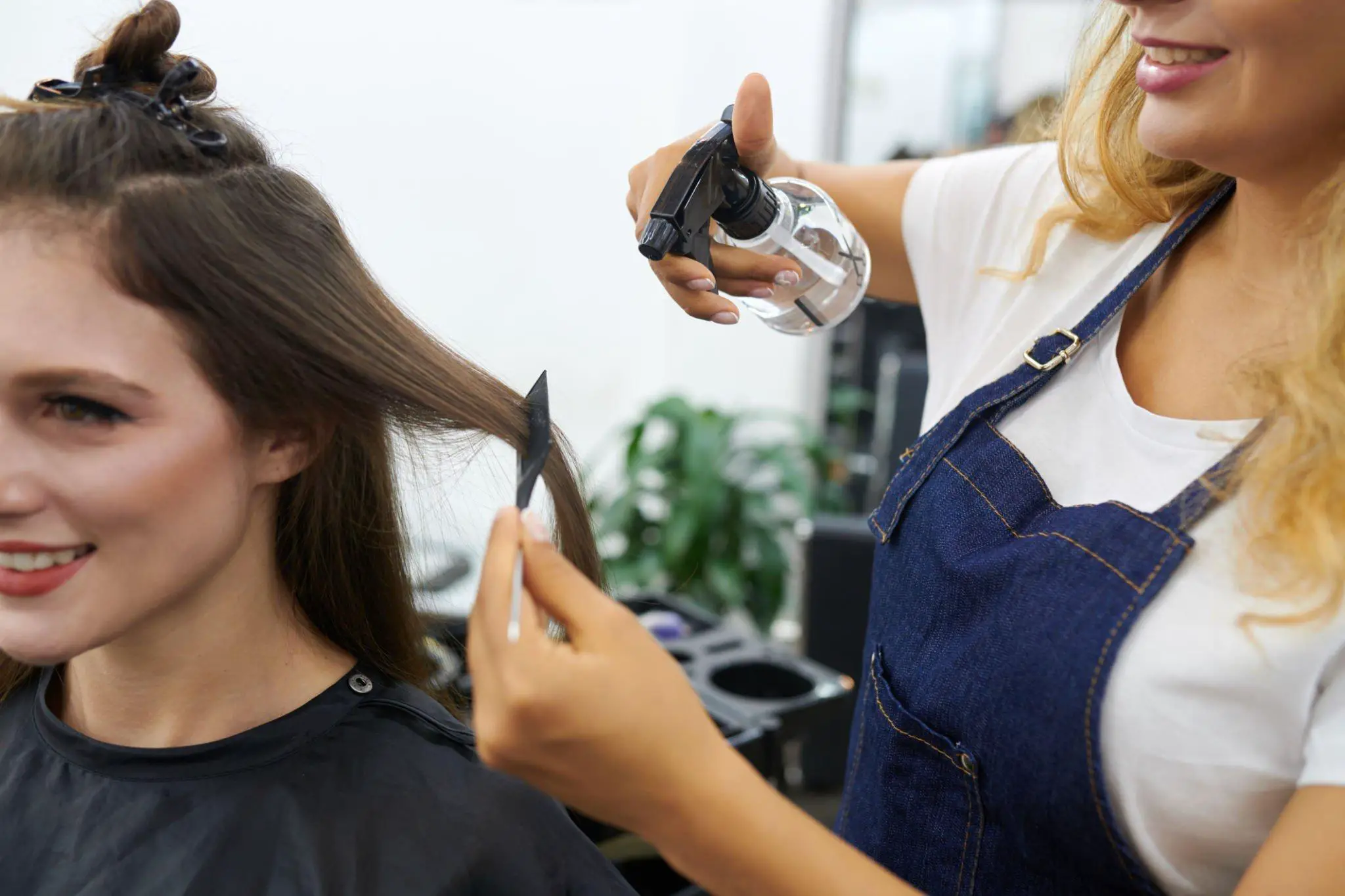Why is My Hair Poofy After I Straighten It?
Sometimes you might find that your hair develops an unpleasing texture once it’s been straightened. You could blame the heat, humidity, or lack of a quality flat iron, but the real culprit may be your brush choice. Brushes with high-quality bristles that are designed to pierce through wet hair are less likely to cause poofy ends than brushes with thinner or softer bristles.
This is the latest installment in our series on how to best care for your hair after washing and drying! Our previous posts covered what happens while you sleep and how to react if your shampoo suddenly goes bad.
When you straighten your hair, you expose it to high heat. If your stylist doesn’t use a heat protector, this can damage your hair. Also, if your hair is too poofy, the straightening process is likely causing the damage.
Moringa Oil
Moringa oil is a natural hair conditioner that is effective for all hair types. Its anti-inflammatory properties make it suitable for use on color-treated and damaged hair. In addition, it is safe and does not irritate when applied to the hair. However, it is still essential to test the product on a small part of the hair before using it on the entire head.
It also protects your tresses by restoring moisture. It is rich in omega-3 fatty acids, which help promote hair growth. Additionally, its high protein content is excellent for strengthening your hair. It also contains zinc, which helps produce keratin in your hair. It also restores dull strands and helps improve elasticity.
Another effective oil to use on hair after straightening is lavender. Its antimicrobial properties prevent bacteria from destroying your hair. Lavender oil also enhances the health of the scalp. It also helps prevent frizz. When combined with other ingredients, it can be used to create a healthy shampoo.
Oils and leave-in conditioners are another great way to repair your hair after straightening. They can also help with frizz and can help tame flyaways. Hair oils containing moringa or avocado oil are great for taming frizz after straightening.
Moringa oil is also an excellent option for thinning hair. It can prevent split ends, reduce frizz and seal split ends, and give your hair a healthy, shiny finish. In addition, its antimicrobial and moisturizing properties make it an excellent choice for damaged or dry hair.
Ceramic Irons
When it comes to hair straightening irons, the right choice can make all the difference. Unlike other irons, ceramic irons are gentle on your hair and reduce the amount of direct heat applied to it. This reduces puffiness and frizz and prevents damage to your hair follicles.
Another advantage of ceramic irons is that they do not get extremely hot, which is excellent for fine or thin hair. Ceramic irons also use less heat and produce faster results. But there are some downsides to ceramic flat irons. If your hair tends to get fried quickly, you may want to choose a tourmaline flat iron or titanium iron.
One thing you should remember when choosing the best flat iron is that you must be patient. This process takes some time, so investing in a high-quality flat iron is essential. Take your time and follow the instructions to get the best results.
If you have curly or wavy hair, exposure to heat often results in dry, poofy hair. This happens when the hair is exposed to excessive heat and not adequately protected. This can happen due to using a low-quality flat iron or not using an excellent heat-protectant product. You can prevent this problem using a high-quality flat iron with adjustable heat settings and a heat-protective product.
After straightening your hair, you should rinse it well with cold water. This will help flatten the cuticles and reduce frizz. The cold water will also help to seal in the moisture. It would be best if you also considered using a deep conditioning treatment. This will keep the moisture and prevent it from escaping after straightening.
Another critical factor is the temperature. If you’re using a flat ceramic iron, you’ll want to use one with adjustable temperature settings. You can change the heat between two and four hundred degrees to get the best results. In addition, a flat ceramic iron is usually much safer than regular flat iron.
Avoid Combing or Brushing
It’s important to avoid brushing or combing hair after straightening because wet hair is more delicate than dry. It can be damaged more easily by brushing, and it can also tear and stretch the hair. Dry hair is also more substantial than wet hair, so that vigorous pulling can be harmful.
Instead of using a brush, use a wide-toothed comb to detangle your hair. You can also use a boar-bristle brush to spread oil over the scalp. Again, depending on your extenuating conditions, a different hairstyle may be best.
Using a Heat Protectant
There are several steps you can take to avoid poofy hair after straightening. Firstly, avoid over-styling your hair by using a high-heat setting. You may also want to consider trimming dry, split ends first. Another common mistake is using too much product after straightening, which can ruin the style.
A good heat protectant is essential for straightening hair. Without it, your hair will be prone to damage during the straightening process. This damage can be caused by too much heat from the flat iron or not using a heat-protectant product. Invest in high-quality flat iron and heat-protective hair care products to prevent this.
Another critical step is to apply a heat protectant before you use a flat iron. This product will protect your hair from damage caused by excessive heat and will also add a glossy finish. It will also help block humidity. As you can imagine, it’s a good idea to read the instructions for your heat protectant and follow them carefully.
The best heat protectant should be formulated for your hair type. It will help prevent your hair from becoming dry and poofy after straightening. Heat protectants also help your hair from breaking and split. In addition, it will protect your hair from heat damage by creating a protective layer around the shaft. It will also help smooth out the cuticles and improve the natural shine of your hair.
While it may sound a little silly, protecting your hair is crucial. If your hair gets too dry or hot, it can lose moisture and become unmanageable. Using a heat protectant product is better to add moisture to your hair. However, you should also avoid using oil-based thermal protectants on your hair. It would be best to use only one or two of them weekly as they can damage your hair.
Heat-protectant sprays are often formulated with proteins and botanical extracts. These products help protect your hair from damaging high temperatures, but you must remember never to exceed the recommended temperatures.


















